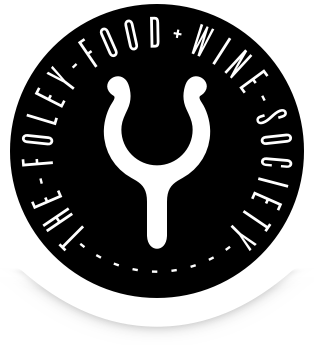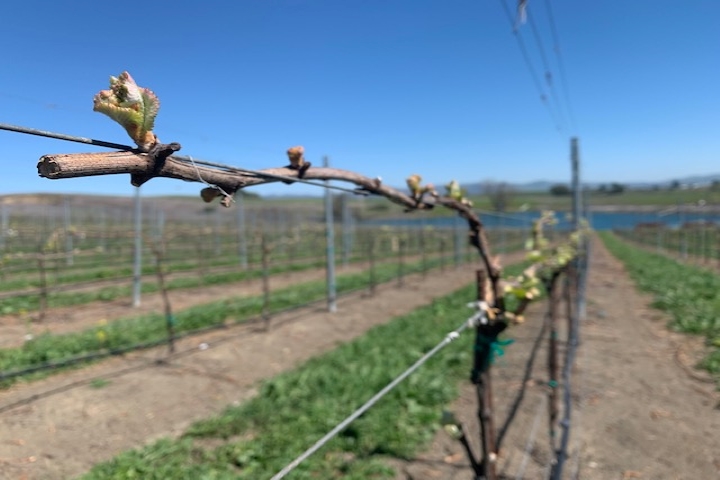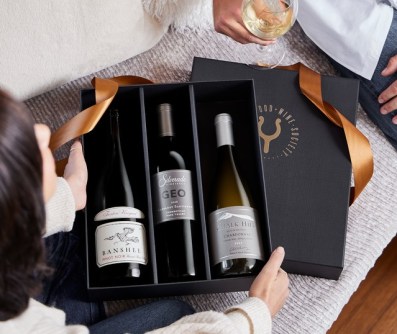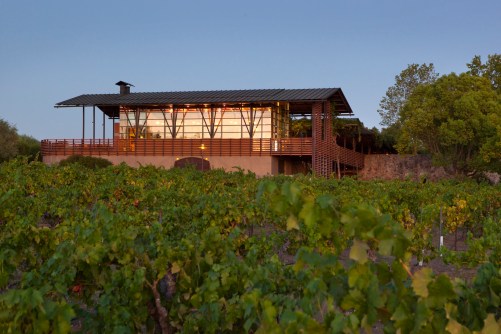BUD BREAK IN MID-MARCH AT RAMAL VINEYARD IN CARNEROS. THE PINOT NOIR CLONE 828 PICTURED HERE IS PLANTED IN CLAY LOAM SOILS.
Our Director of Viticulture for Foley Family Wines is Kara Maraden. We caught up with Kara in mid-March to find out what was going on in the vineyards. Despite all the “shelter-in-place” decrees due to the COVID-19 outbreak, farming is still considered an essential business, and so Maraden and her crew are out in the vineyards most days.
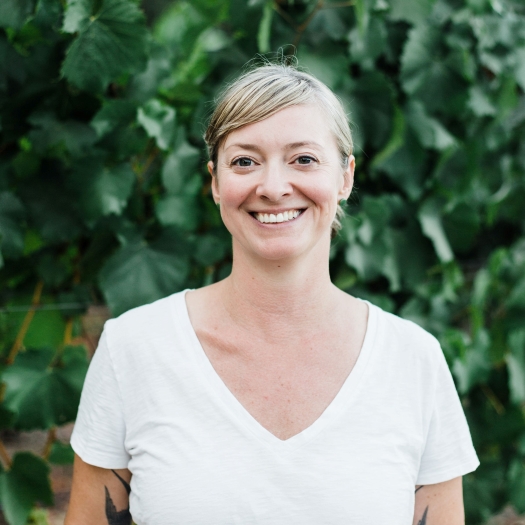
KARA MARADEN, DIRECTOR OF VITICULTURE
FFWS: What was happening in the vineyards in Sonoma in February and March?
Kara Marden (KM): These months are usually a transition month from dormancy to bud break. During these months crews are out full force pruning the vineyards. In some years we would be mowing as well but there wasn’t much rain, so this year we will be waiting on that. Lots of trellis, equipment, and general repairs and maintenance will also be taking place. Basically anything we need to do to get ready for the growing season.
FFWS: Get a little geeky with us—what exactly is happening now, during bud break?
KM: As the air and soil warms up the vines start to wake up and draw on reserves from the previous season in order to push this year’s new growth. This typically starts anywhere from mid-march to mid-April and depends on a few factors such as rainfall/soil moisture and winter weather temperatures. We are a bit early this year because the soil is drier and the temperatures have been mild.
FFWS: Are you worried at all about springtime frosts?
KM: Yes we are always worried about frost. Once the plant pushes its buds and reaches about two or three inches in height, the growing tissue can be killed by freezing temperatures. All of our vineyards that need frost protection have weather stations that have frost alert capability. The mangers and irrigation folks get alerts when the temperature is approaching freezing so they can start frost protection if the temps continue to drop. Usually, around thirty-five degrees Fahrenheit is when the alert goes out and we start to watch more closely. We have some great technology that uses text message alerts and phone app weather station monitoring. If an area has bud break and is in a frost-prone area then we either use frost fans that move warmer air (inversion layer) down to the vine level. We also use overhead sprinklers for frost protection. The water will freeze and as it does, releases a bit of heat which will actually form a protective barrier around the delicate tissue. The coldest part of the night is usually from 3:00 a.m. to 6:00 a.m.

FFWS: Is the spring a time when vineyards need more water than at other times throughout the year?
KM: In a year like this where there hasn’t been much significant rainfall we sometimes consider irrigation around bud break in order to give the vines a source of water (which makes nutrients available in the soil) as they start their season. Some of our vineyards are doing this now, much of this decision is based on soil type and climate. The vines use the most water after fruit set until harvest. That is because the vine is supporting all those leaves and fruit. However, water is always important and we have the advantage here in this Mediterranean climate to control irrigations.
FFWS: When it comes to farming the vines, what kinds of “sustainable” practices are you focused on?
KM: Making sure our irrigation systems are functioning properly so we have irrigation uniformity and we aren’t wasting water, or not using enough. Equipment repair and maintenance is important for efficiency and carbon footprint. We are getting ready to renew many of our certifications and we are in the process of getting audits in order to receive official “Certified Sustainable” status for several of our vineyards.
